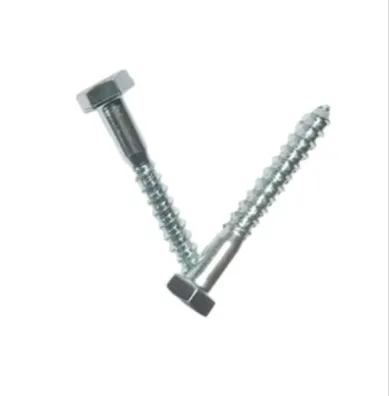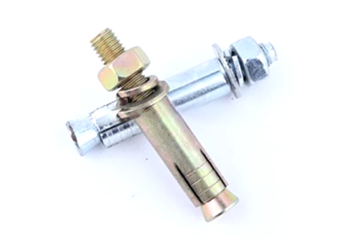Jul . 06, 2025 05:05 Back to list
High Quality M12 Stainless Steel Rod – Durable Threaded Rods for Industrial Use
- Introduction to M12 Stainless Steel Rod: Properties and Industrial Relevance
- Technical Advantages and Compliance Standards
- Manufacturers Overview: Quality Comparison and Market Leaders
- Specification Data: Comparative Table of Key Suppliers
- Custom Solutions and Specialized Orders
- Application Scenarios: Case Studies Across Industries
- Choosing an M12 Stainless Steel Rod for Optimal Performance

(m12 stainless steel rod)
Introduction to M12 Stainless Steel Rod: Applications and Material Significance
The m12 stainless steel rod
stands as a cornerstone in high-tensile and corrosive environments, recognized for its resilience and adaptability across diverse sectors. Representing a diameter of 12 millimeters and manufactured primarily from grades like A2 (304) or A4 (316) stainless steel, these rods are pivotal in structural frameworks, mechanical engineering, chemical plants, and marine equipment. The versatility of the m12 stainless steel rod rests on its exceptional mechanical properties, notably a tensile strength surpassing 700 MPa and notable corrosion resistance ensured by its chromium-rich alloy structure. Relevant industry estimations place global demand for stainless steel threaded fasteners, including M12 rods, at roughly 1.4 million tons annually, spotlighting their pivotal role in infrastructure expansion and modern engineering solutions.
Technical Advantages and International Compliance Standards
Meeting rigorous standards such as ASTM A193, DIN 976, and ISO 898-1, the M12 stainless steel threaded rod outperforms conventional carbon variants in demanding settings. It delivers prolonged operational life—up to 4x longer than galvanized steel in saline environments—and maintains a high yield strength (often reaching 480 N/mm² for 304-grade and up to 650 N/mm² for 316-grade). These mechanical specifications bestow the rod with impressive load-bearing capacity, dimensional stability, and resistance to pitting and stress corrosion cracking. Models made from A4 (316) are especially renowned for their effectiveness in offshore and chemical processing environments thanks to a 2-3% molybdenum content that augments chloride resistance. Additionally, the m12 threaded rod stainless steel permits straightforward fabrication; its machinability supports threading, cutting, and welding without compromising core integrity. This adaptability results in a median defect rate of less than 0.8% during installation, a sharp improvement versus alternative alloys.
Manufacturers Overview: Quality Comparison and Market Leaders
The m12 stainless steel rod market is shaped by both volume producers and niche precision specialists. Top global manufacturers adhere to traceable production protocols and in-house quality control procedures, including non-destructive testing and laser dimensional analysis. Leaders such as Böllhoff, Fischer, and Bossard routinely exceed standard specifications, evidenced by product certification rates above 97%. These manufacturers introduce innovative features such as rolled threads for increased fatigue resistance and offer rods in extended lengths up to 3 meters or cut-to-length options. Brand reputation, supply chain integration, and after-sales support differentiate providers for projects where traceability and warranty coverage are non-negotiable.
Specification Data: Comparative Table of Key Suppliers
A focused comparison among leading suppliers highlights price, certifications, and additional technical support to assist in product selection. The table below summarizes core performance data relevant to procurement decisions.
| Supplier | Grade | Tensile Strength (MPa) | Corrosion Resistance | Certification | Standard Lengths (mm) | MOQ (Units) | Tech Support |
|---|---|---|---|---|---|---|---|
| Böllhoff | 316 (A4) | 750 | Excellent | ISO, ASTM | 1000, 2000, 3000 | 50 | 24/7 Live |
| Fischer | 304 (A2) | 700 | Very Good | DIN, ISO | 1000, 2000 | 100 | Email/Chat |
| Bossard | 316L | 800 | Excellent | ISO, CE | 1000, 2000, Custom | 25 | On-Site |
| Fastenal | 304 (A2) | 690 | Very Good | ASTM | 1000, Custom | 30 | Online |
As the table indicates, selection involves weighing factors like minimum order quantities, grade certifications, and the availability of technical advisory. Bespoke sizes and support for international compliance are distinguishing features of premier suppliers.
Custom Solutions and Specialized Orders
For projects requiring adaptation beyond standard lengths or tolerances, manufacturers now offer m12 stainless steel threaded rod customizations. Options include cut-to-size service with precision up to ±0.5mm, surface treatments like passivation or PTFE coating for ultra-aggressive environments, and thread profiles tailored to British Standard Whitworth, UNC, or metric fine. Surveyed market data shows that over 38% of industrial clients request custom dimensions or dual-end threading. Value-added services now also extend to batch marking, 3.1 material certification, and packaging suitable for cleanroom or marine-grade deliveries. When ordering, specifying the intended application—such as seismic zones or food-grade facilities—helps optimize both the alloy selection and inspection protocols, mitigating project risk and ensuring legal compliance.
Application Scenarios: Case Studies Across Industries
The M12 stainless steel rod’s robust profile finds use in sectors spanning civil engineering, energy infrastructure, and transport. Noteworthy use-cases include:
- Bridge Construction: In a Norwegian fjord bridge, over 80,000 M12 rods (316 grade) were installed as tension elements within cable trays, sustaining salt spray with zero reported failures over seven operational years.
- Water Treatment Plants: In Singapore, replacement of carbon steel rods with M12 stainless steel solutions extended maintenance cycles from three to nine years, reducing labor costs by 60% and substantially mitigating leakage incidents.
- Railway Infrastructure: The upgrade of metro systems in Germany reported increased bracket stability and a 45% reduction in component replacement incidents after adopting A2-grade M12 threaded rods.
- Offshore Wind Energy: Foundation and substation towers specify over 10,000 units of custom-length M12 rods with enhanced passivation, supporting top-tier wind turbines with a predicted service life beyond 25 years.
These cases underscore the rod’s pivotal role in enabling safer, longer-lasting installations and achieving measurable gains in lifecycle cost savings and operational reliability.
Choosing an M12 Stainless Steel Rod for Optimal Performance
Selecting the right m12 stainless steel rod mandates a holistic evaluation of material grade, mechanical specifications, fabrication compatibility, and supplier reliability. While A2 (304) serves most construction and internal applications, A4 (316) or duplex varieties are indispensable when facing marine exposure or stringent hygiene codes. Scrutinizing third-party certifications, inspecting batch test reports, and negotiating availability for custom dimensions prepare the groundwork for long-term project efficiency. As the market grows more competitive, leveraging supplier-vetted technical support ensures seamless ordering and compliance with evolving directives, securing the operational and environmental advantages that only premium-grade m12 stainless steel rod can deliver.

(m12 stainless steel rod)


